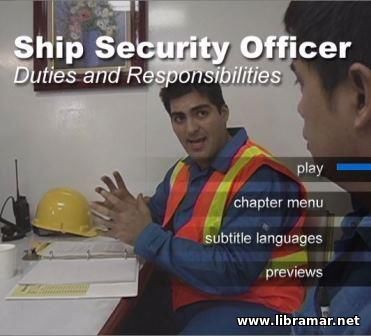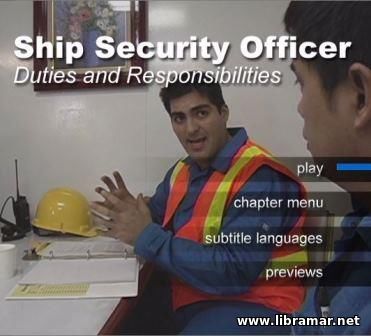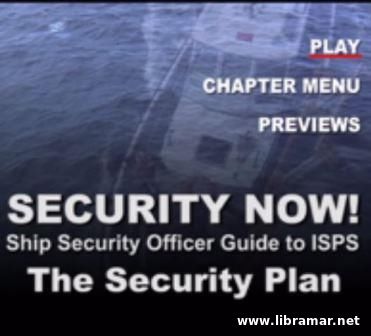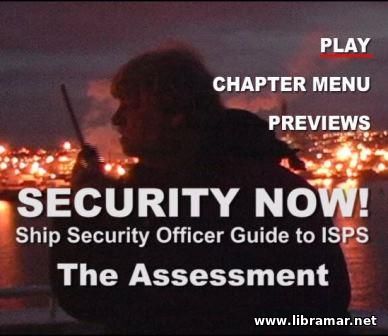 As we know, the incidents represent degree of failure in the shipboard safety management system and can be resulting from the lack of proper training, procedural deficiencies, faulty equipment or other factors, all of which shall be addressed in order to prevent reoccurrence. The most effective tool in eliminating these failures is the accident investigation process.
Conducting accident investigation forces us to take a deeper look at what actually went wrong, identify the root causes, and make recommendations for corrective actions to bring about change. This is a law under the section nine of the International Safety Management Code.
This video is intended to be used as training aid to assist shipboard and accident investigation teams in conducting investigations of accidents or near-accidents. Investigations must be carried out properly in order to prevent fellow shipmates from getting hurt on board your or perhaps some other vessel.
It is also intended to make all crew members aware of the importance of reporting accidents and near-accidents. All of the crew members must recognize that reporting of the near-accidents is as important as reporting actual accidents. Near accidents trigger the warning signs that the potential for an accident exists.
 Consider this scenario – while in port, a gang of intruders attempts to gain access over the stern of your ship. Would you know what to do? Heightened ship security requires planning, coordination and new responsibilities. Much of it falls to the SSO, or Ship Security Officer. In this program, we will look at the key competencies required of the Ship Security Officer, the Ship’s Security Plan, identifying threats, the ship/shore interface, responding to threats, and security administration.
It is likely to be a regular ship’s officer who will be asked to assume the duties of SSO. It is important that these new duties not be overly burdensome, and can be integrated into his or her regular responsibilities. There are five key competencies required of the SSO. The first one is to maintain and supervise the implementation of the Ship Security Plan, which should be ship-specific and updated regularly based on new information and security drills and exercises. The second required competence is to assess security risk, threat and vulnerability, and this will involve coordination with port facilities and awareness of MARSEC levels.
The third one implies undertaking regular inspections of the ship to ensure appropriate security measures are implemented and maintained – this includes establishing and marking restricted areas on the vessel, and limiting access to these areas. The number for is to ensure that security systems and equipment are properly operated, calibrated, and tested as necessary – note that the port state authorities may ask for a demonstration of these systems during their inspections. Finally, the last competence is to encourage security awareness and vigilance, including drills, exercises, crew education, practice and training.
 The Ship Security Plan is not only vital to the safety of people and shipboard equipment, but it is also required by law. United States and IMO are requiring mariners to have security plans in place and in force. The threat is real and growing. Unauthorized boarding, introduction of prohibited weapons, flammables, explosives, unauthorized occupation or operation of the vessel at sea – and the consequences are truly alarming – cargoes, ships, and perhaps even human lives at risk.
The Ship Security Plans will vary according to the vessel, its cargo, its trade routes and ports of call. But the scope of each ship’s Plan should include the basic elements, namely measures and equipment used to deter the prohibited weapons as well as the unauthorized devices and substances; the restricted areas on the ship shall be clearly identified and any unauthorized access to such areas prevented.
Finally, the third elements is made of the procedures, established to make sure that all security threats are duly responded to and the critical operations maintained, and these procedures shall be strictly adhered to at all times. Note also the procedures involving the emergency evacuation of the people as a result of the security breach. The duties of all ship personnel shall be clear, and the periodic and regular training, exercises, drills and audits be in place.
 Shipboard security has always been a vital part of the maritime safety. Today, we are even more concerned and aware of security since terrorist attacks target not only skyscrapers and embassies but also our ships at sea. Piracy, sabotage, stowaways, and hijacking – these threats to maritime security are well known.
The first part of this video training is devoted to the regulatory framework, namely, in the United States, the Maritime Transportation Act of 2002, and internationally - the ISPS, standing for the International Ship and Port Facility Security Code. The latter requires that the ships have their IMO numbers clearly marked on the hull. The Continuous Synopsis Record, or CSR, of the ships history, shall be available at all times.
The other integral parts of the Code are the Security Alert System, SSP, i.e. the Ship Security Plan, approved by the vessel’s Flag State, which will issue an ISPS Certificate. The ISPS Code details the security requirements and they are presented in two parts – the mandatory requirements and a series of guidelines on how to meet these requirements, and non-mandatory requirements. Some countries, such as the United States, will require vessels to comply with both Parts A and B.
 Security threats come in all shapes and sizes, with different intents, agendas, and motives. Not everyone who wishes to do us harm, is a terrorist. Any unauthorized person with unauthorized access to a vessel has a potential to harm – thieve, hijacker, stowaway, etc. Crew members and officers may be asked to modify their duties once a vessel security plan is in force. In general, they shall be fully aware of all security threats and issues.
They shall arrange for the thorough inspection of the security equipment and reporting on any malfunctioning items. In addition to that, they shall immediately report any suspicious persons, objects and activities. Moreover, they may be assigned additional duties as required by the security plan. There will be different security measures required depending upon the security level, which is set by the port authorities. The security plan will have a graduated table of responsibilities and duties which are appropriate to each of three security levels, and per the ISPS Code.
Another critical implementation is establishing restricted areas and controlling access to those areas. These restricted areas may include, but are not limited to, the following – the navigational bridge, machinery spaces, main and auxiliary steering gear compartments, ventilation and AC systems, systems with direct access to the potable water tanks, pumps, and manifolds, etc.
 Consider this scenario – a bomb threat on the bridge of your vessel. What would you do? Unfortunately, we now live in the time when terror almost routinely includes the use of explosives, threatening commerce, threatening property, and threatening human lives. In this program, we will look into the threat posed by explosives, and preventive measures to minimize that threat. Searching the ship effectively, confronting the explosive device, and the effective planning and response are the integral parts of this training.
Ships are extremely vulnerable to a saboteur using explosives. He poses a different security threat than a stowaway or hostage taker as he will most likely try to remain anonymous and undetected. The explosive threat can be directed against a ship of a particular nationality for political reasons, against a policies or property of a particular shipping company, to sabotage or compromise a sensitive cargo, or to protest a grievance or issue.
The availability of explosive materials makes them extremely attractive for terrorists. As we can see from horrifying headlines, it is often very difficult to stop a terrorist, especially when he is willing to commit suicide to fulfill the mission. Still, there are sensible precautions that crews can take to help prevent explosive attack. First, they have to lock and seal any potentially vulnerable compartments, and watch for any signs of tampering, be especially alert to unusual objects in unexpected places, not touch any suspicious objects or packages – report them immediately…
 Shipping business has always been considered quite a tough one and nowadays it is getting even tougher for the people who depend on it for the living. Seafarers now face the often difficult job of defending their ships against people that desperate whatever the cost to get on board, finding themselves coping with stowaways.
The intention of the authors of this training pack was to raise the awareness of the crew members and officers of this growing problem. This training film will be even more useful when accompanied with this training booklet dedicated to the same problem. Watch this video and be aware of the potential problems connected with the stowaways and the consequences they may have.
Watch it carefully and go through the content of the book to understand the scale of the problems associated with the stowaways, be able to properly search all hidden places on your vessel using the effective strategies, manage stowaways in the effective manner whole way from discovery to final disembarkation, and duly understand all fundamental ethical and legal requirements applicable to their treatment.
 Unfortunately, but it is true that in some parts of our planet the maritime piracy is not a subject only for the history books. Recent increases in a number of vessels being attacked means that ships' crews now need to learn about preventive measures as being prepared can help reduce the risk of an attack. The present educational video film is devoted to the problem of maritime piracy and robbery.
The authors of the film have tried to shed some light on this problem which is becoming more and more serious, threatening people and making the international maritime shipping more and more dangerous occupation. Watch this film and you will know much more about the current situation in provision of shipping safety, understand the real difficulties and dangers faced by the mariners of today and think about the potential remedies for his global problem.
A good one for the people interested in the maritime industry as it will let them know something which is not elucidated well enough in the classic books on shipping.
|







